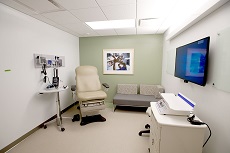
“How to effectively run a medical practice,” is one of the most searched items online. The complexity of the query is mainly because medical ventures, unlike typical ventures, have unlimited requirements. However, the universal requirements do not make running a medical practice more effectively a farfetched reality.
The following is a comprehensive guide on how to run a small medical practice effectively.
- Always choose medical equipment wisely
The choice of medical equipment can either make the practice consistent with the global standards or not. Over the years, quality equipment was synonymous with a huge budget, but this is no longer the same. Different manufacturing companies have continued to invest in this market making it relatively cheaper to acquire quality equipment. Surgical blades, for example, are one of the most important tools in a medical practice.
It is good to understand what the medical practice needs in terms of equipment. According to pundits, this is a good starting point for better spending on equipment. In medical equipment spending, every dollar should count.
- Automate most of the operations
Unlike a decade ago, automation is no longer for big-budget facilities. One of the best ways to make a small medical practice effective is to ensure that important aspects are consistent with the growing technology. In addition, it is vital to utilize technology in an attempt to reduce human errors. Technology also plays a part in scheduling appointments or sending regular newsletters.
The beauty of technology is that it does not have to be expensive to be effective. There are tons of free tools for better management of basic operations, and others are relatively cheap. The golden rule in investing in operational systems is to go for tools that solve the fundamental challenges within the medical facility.
- Monitor performances of people and systems on a regular basis
Monitoring performances of people and systems on a regular basis is essential, not only for better decision making but also for identifying weak points on facility operations. In order to run a medical facility, it is essential to check the following aspects on a regular basis.
First, evaluate whether the revenue collections are constant with the facility expectation. Second, it is vital to ensure that that the workflows are also consistent with the facility blueprint and, more importantly, with the global standards. It is, however, crucial to note that expectations should not overstretch the current realities in the medical world by overemphasizing unrealistic expectations.
- Constantly improve the client-facility relationship
The client, who in this case is the patient, deserves the best possible services. Best services in the service industry are subjective to many factors. However, the medical facility should invest in systems that make the medical facility consistent with the growing medical world.
First, it is essential for a medical facility to identify loyal clients and, in return, develop systems to subsidize the medical charges on predetermined time intervals. Alternatively, the medical facility can organize free check-ups on a regular basis in an attempt to foster a bond with the client. Second, in the quest to improve the client-facility relationship, the facility can improve communications between the two.
- Redefine roles within the medical facility
In the medical world, one of the significant operational mistakes management does is double assigning tasks or giving people assignments solvable by machines or automated systems. The main problem with misallocation of tasks is unproductivity and high costs of running the facility. Sometimes, operational mistakes make some departments less active due to fewer professionals.
It is, therefore, logical to evaluate the human resource needed on each department on a regular basis. This approach not only makes the medical facility a hub for production but also a financially viable business. There are different tools one can use to redefine roles, and one of the significant tools is by hiring a human resource manager.
- Continually improve on risk management within the facility
Risks in the medical world are endless. There are two types of risk management approaches in medical facilities. The administration can be either proactive or reactive. In each of these approaches, there is a definite set of results. However, for a better and smooth operation of the facility, it is essential to have a proactive approach to risk management because it gives the facility management an upper hand on situations and helps the management to stay grounded on the facility’s goals.






